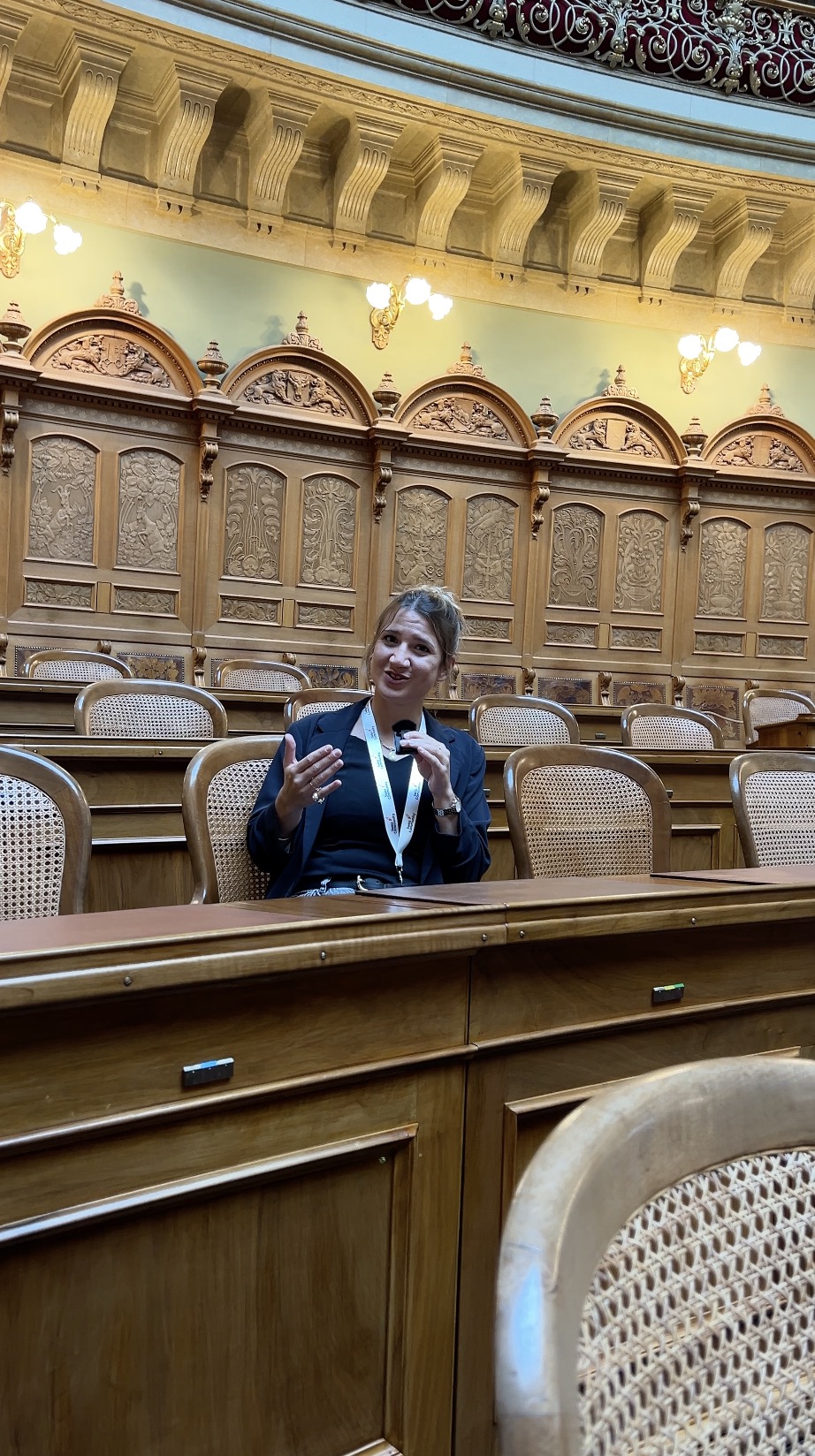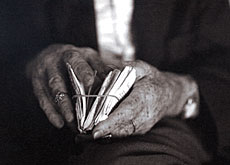
Painless de Sade experience in Zurich

An art exhibition in Zurich sets out to show that the Marquis de Sade (1740-1814) was much more than just a connoisseur of sexual perversions.
The man who gave language the word “sadism” was a writer whose work is still the subject of serious scholarship. Indeed, his life and writings became an inspiration for the Surrealist movement more than 100 years after his death.
“My great-great-grandfather would have been fascinated by this exhibition,” says Thibault de Sade, whose face in profile bears a striking resemblance to the portraits of his ancestor.
Thibault de Sade, who was at the official opening, told swissinfo: “He was an extremely curious man and would have been very interested to see how artists translated their thoughts about him into their paintings and sculptures.”
Debauched imagination
As early as 1792 an anonymous French writer said: “Although only a debauched imagination can have produced such an abominable work, one has to admit that it is rich and brilliant in its own way.”
The Surrealists were the first to take de Sade seriously – and openly – as a writer and artist rather than as a case history for students of criminal science or sexual pathology.
It is from an artistic standpoint that the exhibition in Zurich’s Kunsthaus embarks on a relatively painless journey through the life of the French aristocrat.
Some paintings and sketches may make the more sensitive visitor wince, but most people will leave the museum with a better understanding of de Sade and how his philosophy inspired many leading 20th century artists – not least by fuelling their erotic imagination.
Few visitors are likely to be shocked by the various images on view, even though the museum recommends that the exhibition is unsuitable “for people under 18 or who are especially impressionable”.
“We made this recommendation for legal reasons,” says curator Tobia Bezzola. “In practice nobody will be turned away. Young people these days are exposed to much more extreme depictions of violence and sexuality than we see in this exhibition.”
The Dream of Sadism
All the same, the exhibition has taken care to avoid startling any unsuspecting visitor. For example, a 1922 painting by Otto Dix – The Dream of Sadism – is concealed behind maroon curtains, which the visitor must open.
Most works will fascinate rather than titillate, and many (such as the Dix picture) reveal the sense of humour evident in much Surrealism.
Works by Goya, Füssli and other Enlightenment figures are included in the exhibition as a foretaste of the erotic fantasies of the Surrealists who, as the catalogue points out, “did not interpret de Sade’s oeuvre as a celebration of horror but rather as an artistic reflection on this celebration”.
Gathered around André Breton, the movement admired their source of inspiration not for his association with cruelty but for his unbridled imagination, even when confined to a prison cell.
“De Sade was for the Surrealists the absolute revolutionary,” says Bezzola. He challenged everybody – the State, the Church, the Family, in fact whatever authorities there were. He did this not only in his writings but also in the way he lived his life.”
by Richard Dawson

In compliance with the JTI standards
More: SWI swissinfo.ch certified by the Journalism Trust Initiative






































You can find an overview of ongoing debates with our journalists here . Please join us!
If you want to start a conversation about a topic raised in this article or want to report factual errors, email us at english@swissinfo.ch.